En no Gyoja: Mountain Ascetic and Influential Religious Figure
2021/08/18
In this article, we will briefly discuss the legendary historical figure commonly known as En no Gyoja (“En the Ascetic”) whose roots are found right here in Nara Prefecture. The many stories surrounding his life are filled with incredible feats that elevate him to the status of a mythical being, but also the many practices, ideas, and places directly credited to his influence ground the importance of his life in the comprehensible and tangible.
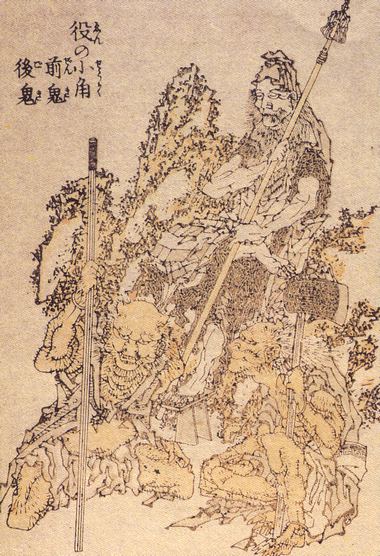
A Hokusai painting of En no Gyoja with his 2 oni (“demon”) followers, Zenki & Goki. Here he is referred to as “En no Ozuno,” another one of his common titles.
En no Gyoja was born in the year 634 CE at Kisshoso-ji Temple, a location just on the cove of the southeastern mountains of the Nara Basin (modern-day Gose City area). He later became an ascetic, training with mountain hermits and living an austere life in a cave on nearby Mt. Katsuragi for decades. Over time, he gained a reputation for being a highly skilled apothecary and having mystical powers. In fact, a medicine created by En no Gyoja named “Daranisuke” is still around today, produced in the Yoshino region, and is used to treat various ailments including stomach aches and hangovers.
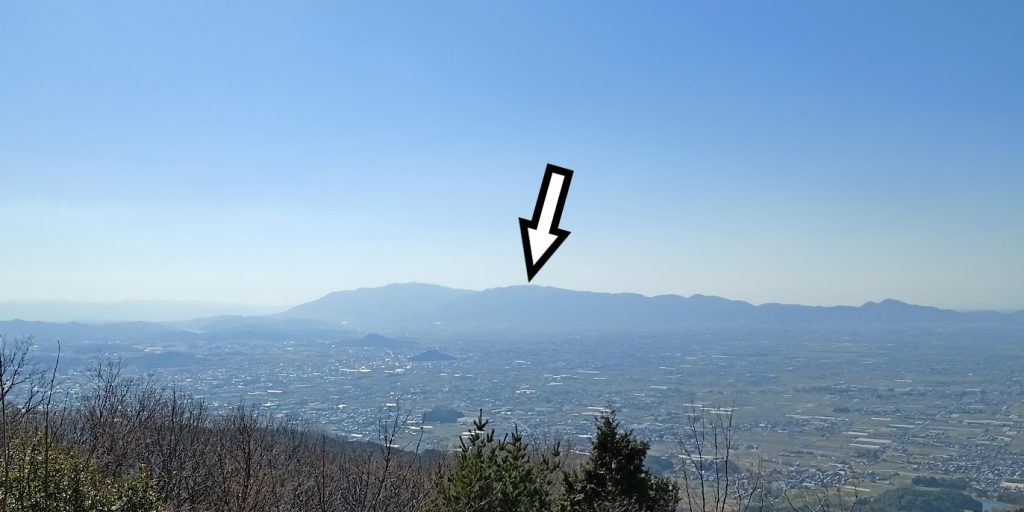
Looking towards Mt. Katsuragi (arrow) and the southern Nara Basin. Gose City is located around the base of Mt. Katsuragi.
According to historical writings from the end of the 8th century, En no Gyoja was exiled by the Emperor after being accused of witchcraft. A legend attributed to this explains that his expulsion was in relation to being slandered at the Imperial Court for forcing a local god to help him build a mountain-spanning bridge. He was later exonerated but many legends still abound surrounding his extraordinary abilities, including that he could fly around on a multi-colored cloud and that he was the first person to climb every mountain in Japan.
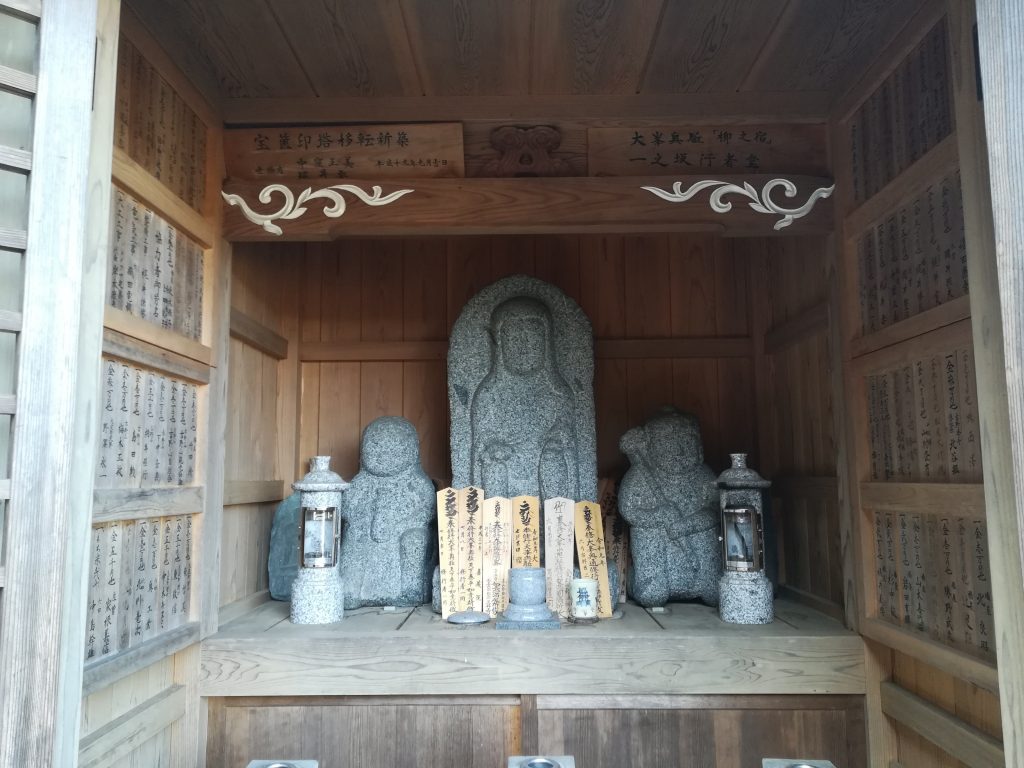
En no Gyoja with demon followers at Yanagi no Yado near the Yoshino River
En no Gyoja is also an important religious figure in Japan as he is considered the founder of Shugendo, a indigenous religion based around nature and mountain worship that combines spiritual traditions from a variety of different belief systems including Buddhism, Shintoism & shamanism. En no Gyoja established the base for the religion on Nara’s Mt. Omine over 1,300 years ago after witnessing (and playing a part in the creation of) a new deity named Zao-gongen there. He is also credited with creating the nearly 100 KM long Omine-Okugake Pilgrimage Route (now a UNESCO World Heritage area) that runs from the Yoshino River in Nara, down to the Kumano Hongu Taisha Grand Shrine in Wakayama.
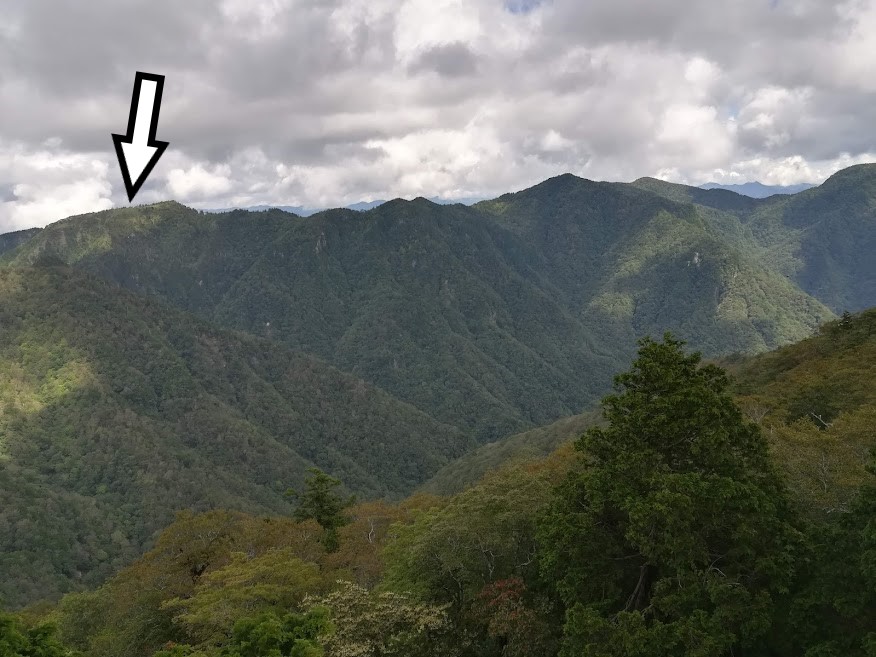
Peak area of Mt. Omine (flat-topped section below the arrow). The Omine-Okugakemichi Pilgrimage Route follows the ridgeline to the right in this image (south).
Upon witnessing this new deity, En no Gyoja was said to have carved the image of the figure he saw out of yamazakura (mountain cherry tree) wood, leading to the tree becoming a sacred part of the faith. He also established Kinpusen-ji Temple in the area of Yoshinoyama, which later became (and continues to be in modern times) the most famous location in the country for cherry tree blossoms due to Shugendo devotees cultivating vast groves of the plant along the area’s mountainsides for centuries. Because of this tradition, the argument can be made that En no Gyoja greatly contributed to the veneration of the cherry blossom that exists in Japanese society as a whole.
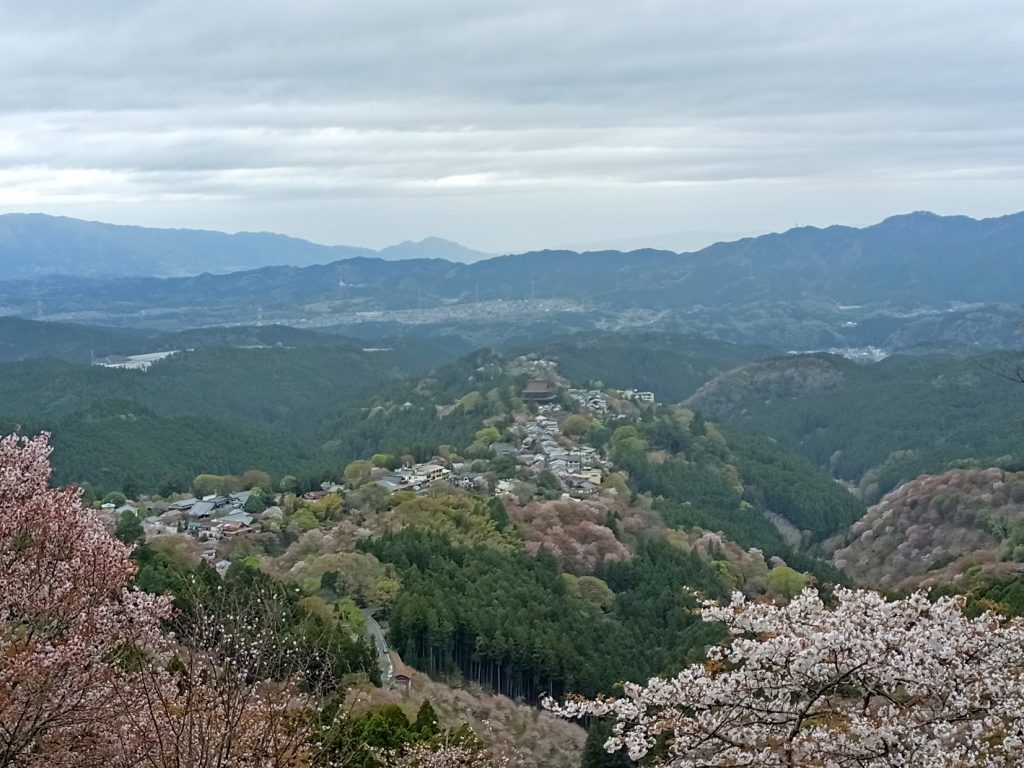
Yoshinoyama in the early spring. En no Gyoja founded Kinpusen-ji Temple here over 1,300 years ago as a place for worshipping the deity Zao-gongen and practicing Shugendo.
Over time, the Shugendo faith spread throughout the country, with practitioners (commonly known as “yamabushi”) becoming famed for their ascetic training in various mountainous areas through which they gained spiritual power that could be used to help communities and individuals in a variety of ways (similar to a Buddhist priest). Unfortunately, Shugendo was outlawed during the Meiji period (1868 – 1912) when the government enacted a policy of separating Shintoism from Buddhism and many old Shugendo places of worship were lost. After World War 2 concluded, freedom of religion was made law in Japan and Shugendo returned as an openly practiced faith which continues to this day.
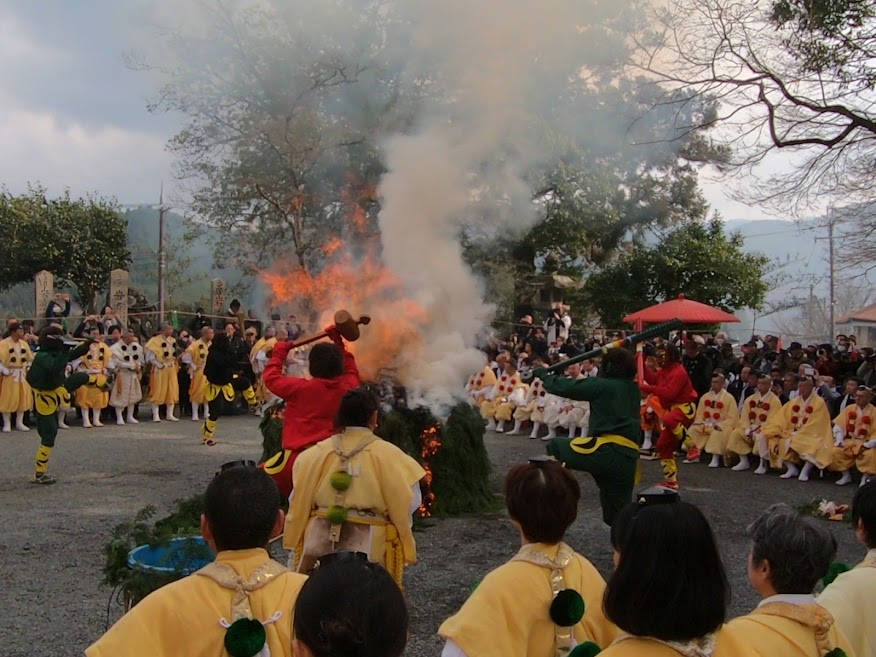
Shugendo practitioners (“yamabushi”) participate in a Setsubun ritual at Kinpusen-ji Temple in Yoshinoyama, Nara. The inclusion of the oni (“demons”) in the festivities seen here is a celebrated tradition going back to En no Gyoja.
If all this seems quite complex, that is because it is. There are many different stories and ideas attributed to En no Gyoja, depending on who you ask and there are different sects of Shugendo as well. Unlike many other figures associated with founding major religious movements (such as Kukai or Saicho), En no Gyoja was not so much known as an studious academic priest, but rather a more enigmatic, almost wizard-like figure of many talents who took on both humans and demons alike as followers. Furthermore, the stories associated with him contribute to the unique character of the mountainous region of the Kii Peninsula where he spent much of his time.

A statue of En no Gyoja along the Omine-Okugake Pilgrimage Route in Yoshinoyama.
If after reading this you find that you want to learn more about En no Gyoja or Shugendo, Nara Prefecture is a great place to start! The previously mentioned ridgeline temple district of Yoshinoyama, located in the mountains of Yoshino Town, is a highly recommended place to visit as it is easy to access by train via Kintetsu Yoshino Station. There you will not only find a vast amount of history related to En no Gyoja & Shugendo (including several active temples), but also comfortable places to stay the night and a variety of local shops and restaurants.

01
FIND YOUR FAVORITE
TRIP ON OUR WEBSITE.
SEND US AN INQUIRY.

02
PERSONALIZE THE TRIP
TO YOUR INTERESTS
WITH OUR CONSULTANT.

03
20% DEPOSIT TO CONFIRM.
BALANCE PRIOR TO ARRIVAL.
PAYMENT BY CC OR TT.

04
WE WILL
MEET YOU
AT THE AIRPORT.

05
DISCOVER THE
TREASURES!